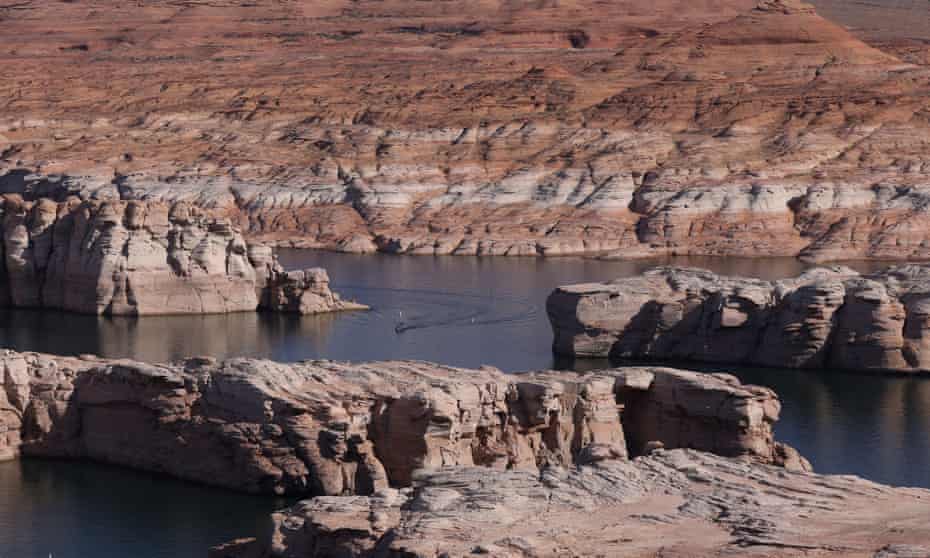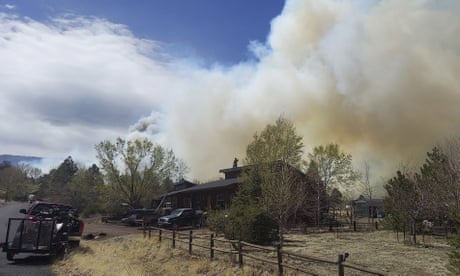Extract from The Guardian
State water authorities are expecting a further decline in the amount of water received from the Colorado River in August.

The growing shoreline of Lake Powell is visible with low water levels not seen since the lake was filled in the 1960s.
Sun 8 May 2022 01.03 AEST
Last modified on Sun 8 May 2022 02.00 AESTThese expected cuts stem from the effects of a decades-long megadrought, which has been greatly exacerbated by the climate crisis. Moreover, the Colorado River, which provides water to almost 40 million people, has been imperiled due to decades of overuse. The river’s reservoirs, Lake Mead and Lake Powell, have seen worsening declines in their water levels.
Arizona is typically granted 2.8m acre-feet of water from the Colorado River. The US Bureau of Reclamation, which manages water and hydropower in the south-west, declared its first water shortage in 2021; federal mandates and state-based efforts resulted in Arizona leaving 500,000 acre-feet “behind Hoover Dam” this year, according to AZCentral.com.
The Bureau of Reclamation makes mandates based on water levels in Lake Mead, which are determined by upstream disbursements from Lake Powell. The water level in Lake Powell has approached the minimum required to produce hydropower that provides electricity for several million residents, AZCentral.com said.
Arizona’s department of water resources, and Central Arizona Project (CAP), have insisted that the state must take further measures to save water. Tom Buschatzke, the water department’s director, said that if the reclamation bureau predicts further cuts in 2023, “there should be serious consideration by water providers to start going down that path”.
“Most of the water use is outside the home,” Ted Cooke, CAP Deputy director, reportedly said to 12 News. “It’s in the yard, it’s pools, it’s plants, it’s lawns.” While Arizona water providers have never required residential water reductions, some city governments did curtail their own usage amid a severe dry period in 2004.
Buschatzke said that if water from the Rocky Mountain snowpack does not boost the reservoirs in 2023, a more serious shortage could impact Arizona cities’ water supplies. “Look at all of those factors and it’s probably time to start doing something at the homeowner level or the business level,” Buschatzke told AZCentral. “I can’t dictate that, but I might urge those folks to consider doing that.”
Officials said that Arizona homeowners are not likely to see “dry taps” anytime soon, as there have been initiatives to store unused Colorado River water in underground aquifers. However, it’s possible that cities will consider tapping these reserves for outdoor purposes, which could start depleting them – without any clear path to replenishing the water, AZCentral.com reported.
In addition to Arizona, potential water cuts next year could also impact Nevada and Mexico and, eventually, California. “The gravity of the immediate situation is serious,” Buschatzke, told The Los Angeles Times. “We expect further significant actions to reduce water use will be required.”

No comments:
Post a Comment